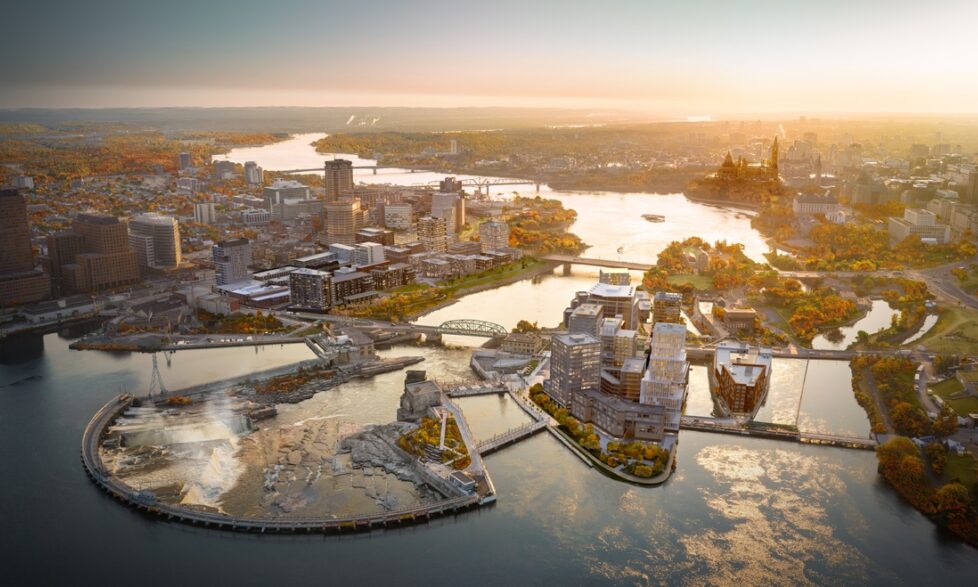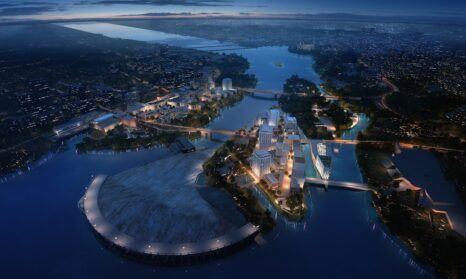Zibi’s new district energy network, explained
Earlier in April, One Planet Living Global Leader Zibi announced the launch of its new zero-carbon district energy network. Sounds impressive, doesn’t it? So what exactly is a district energy system, and how will this one work in practice? Our new Comms Officer, Keenia Dyer-Williams, took the opportunity to ask our One Planet Living Manager Ben Gill about the significance of this announcement.
What is a district energy network and how do they typically work?
A district energy network is like your water network but takes hot water – or heat – around a local area.
Instead of having individual gas boilers, all the buildings share the same source of hot water. Often, it will go first to industrial areas which need hotter water. In the building receiving the heat, a heat exchanger brings the temperature down to one more useable for residential purposes, and the water is sent round in this hot water system.
It’s the same process used by another One Planet Living Global Leader, Les Villages Nature Paris.
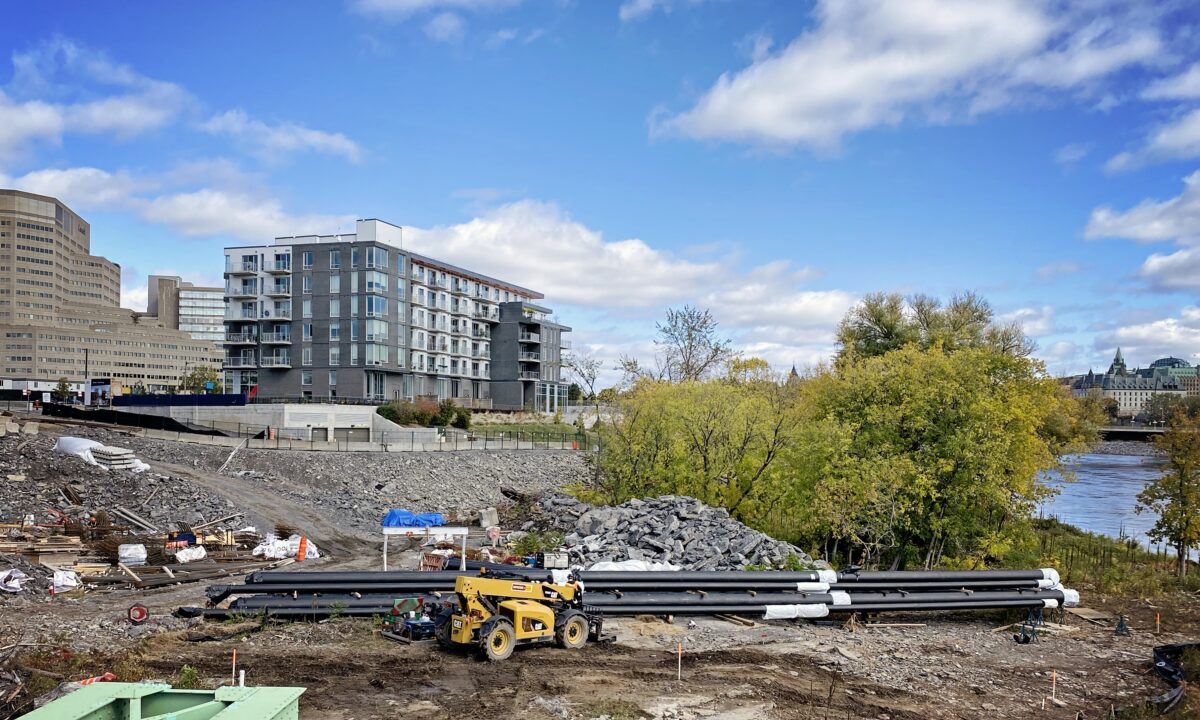
The news story said that the system will eliminate greenhouse gas emissions from Zibi’s heating and cooling operations by ‘leveraging locally generated hydroelectricity, river-coupled cooling from the Ottawa River and waste industrial heat from the local Kruger Products plant’. How exactly will it work?
Zibi had been using a similar process to Les Villages Nature Paris for heating. Up until now, it has been powered by natural gas but the plan had always been to switch over to a paper pulping mill. The Kruger Products plant generates a lot of waste energy in the form of warm effluent, which is 'low-grade heat' and of no use to the industrial process.
However, the waste energy is hot enough for use at residential and office buildings. This heat passes through the Zibi Community Utility (ZCU) Central Plant and is distributed to buildings in the network, with waste heat being poured back into the Ottawa river.
The system will also take cold water from the river, using electric ‘chillers’ to cool the water further before sending it back to cool the buildings. The water goes round in this ‘closed-loop’ system.
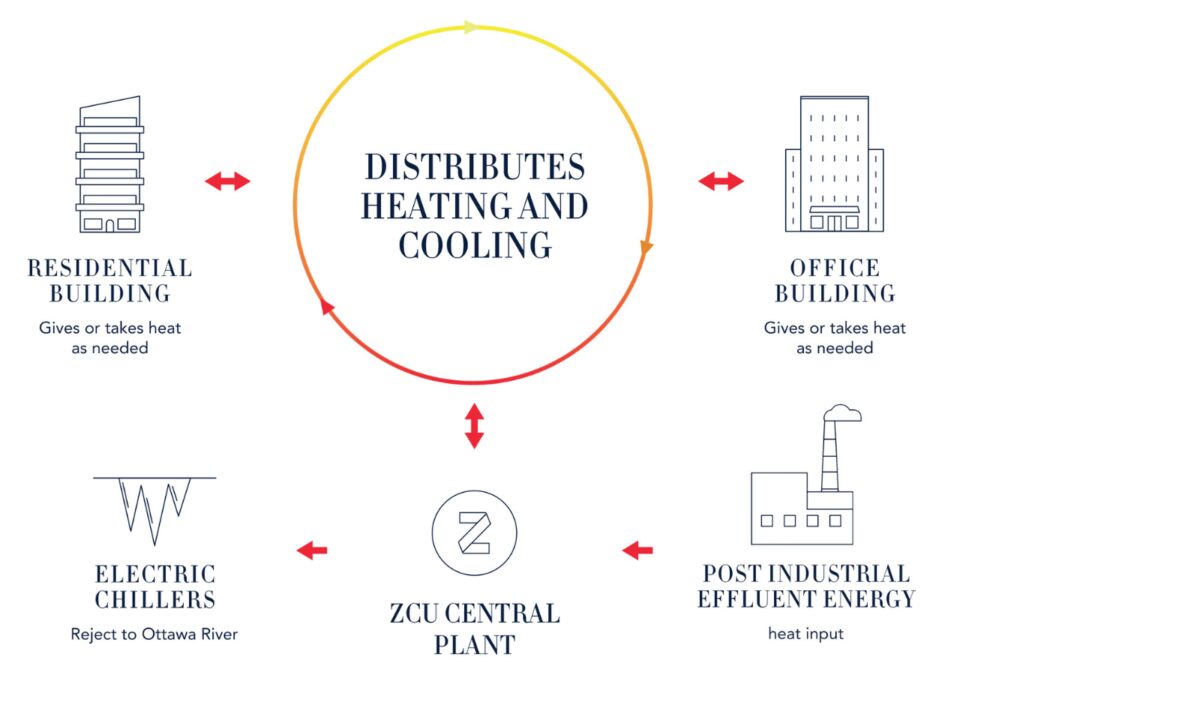
So why is that zero-carbon?
On the one hand, the factory itself is using wood - a renewable energy source - as its source of energy. But that heat was previously being wasted and probably having an impact on the local environment because it was being dumped into the river. Now that waste energy is going to be used for district heating, so they are taking a waste product and using that to create valuable heat for the site.
This was the last piece of the puzzle for Zibi as they’re fortunate to be in Canada, where most of the grid electricity is renewable and comes from Quebec’s hydropower. But in Canada, you do need a lot of heat - particularly in winter - so they had to find a way to generate that heat sustainably.
What does the video show us?
Zibi has secured funding from the Federation of Canadian Municipalities (FCM) which allows them to start the necessary work of developing the system. What it means is that before the next winter in Canada, they’ll have the heat network up and running, which is well ahead of the schedule they had in their strategy.
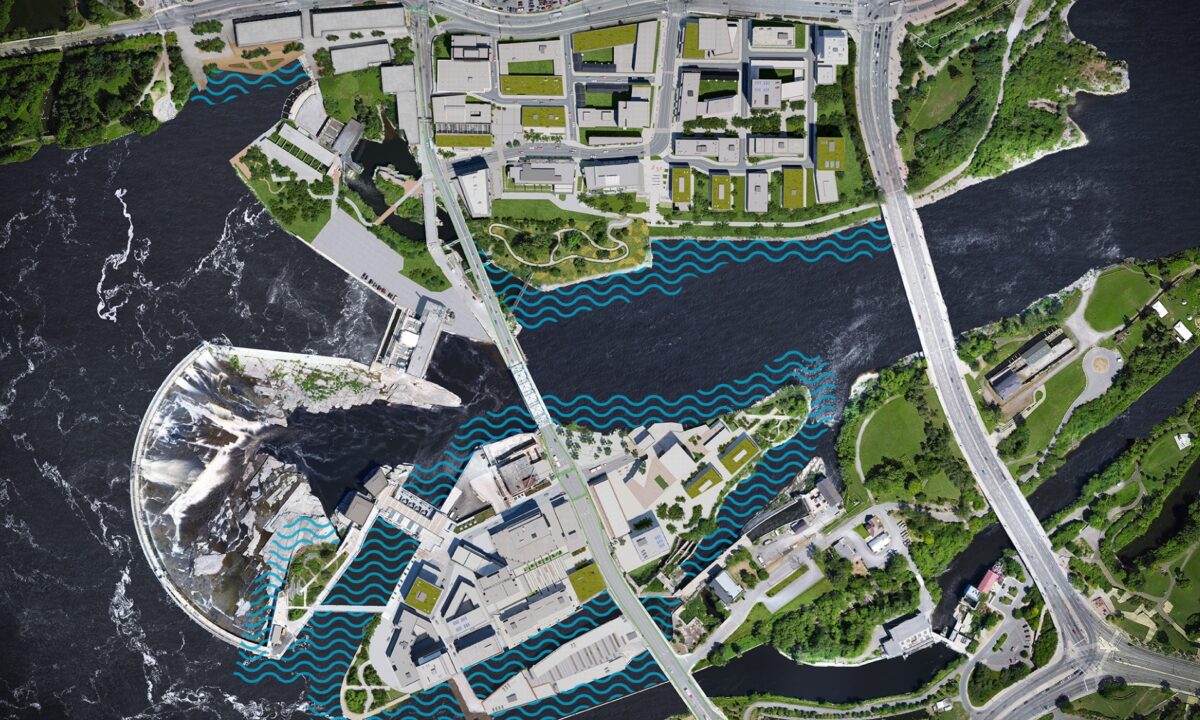
This speaks volumes for Zibi’s commitment to achieving One Planet Living, and net-zero carbon emissions.
How significant a development is this in terms of prospects for developing renewable sources for energy – in Canada and globally?
The scale of what they’re doing is significant – it is probably the largest heat network using waste from an industrial process in Canada.
Each of these heating systems are bespoke, so it’s not the easiest or cheapest path. The default system would have been to put in gas or oil heaters which would be a lot easier, cheaper, and the technical know-how is there.
This speaks volumes for Zibi’s commitment to achieving One Planet Living, and net-zero carbon emissions.
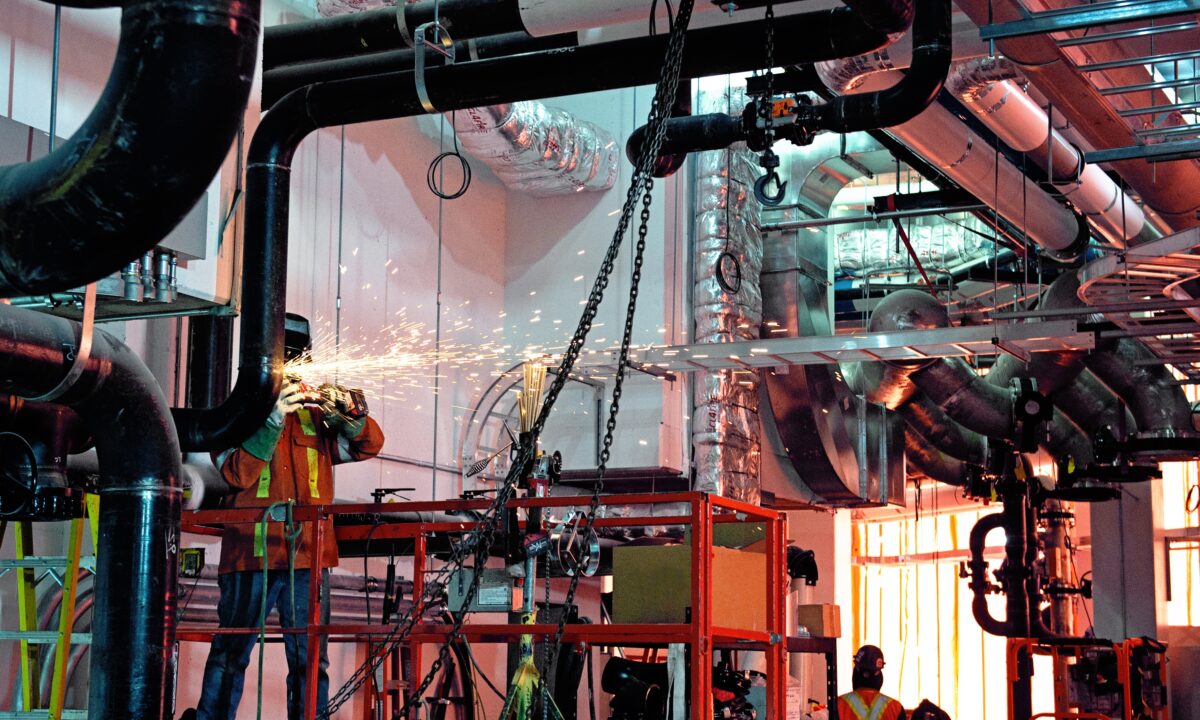
Where are we at in terms of the build, and what are the timescales?
It should be up and running by the winter, as opposed to the original 2025 timescale.
What do you think other developers could learn from this? What could this approach mean for current and aspiring One Planet Cities?
Zibi identified this opportunity as having potentially the biggest positive impact on their project and said: “we’re going to do this”. They ran into several difficulties and problems – not least the fact that they couldn’t afford to pay for it. But they found a way of making it happen by seeking and securing investment because they saw how beneficial it would be.
It’s a locally bespoke solution that needed a lot of tenacity to make it happen... and after making that commitment, they have managed to deliver. So what’s the message? Find your local solution and then just make it happen – don’t give up!




